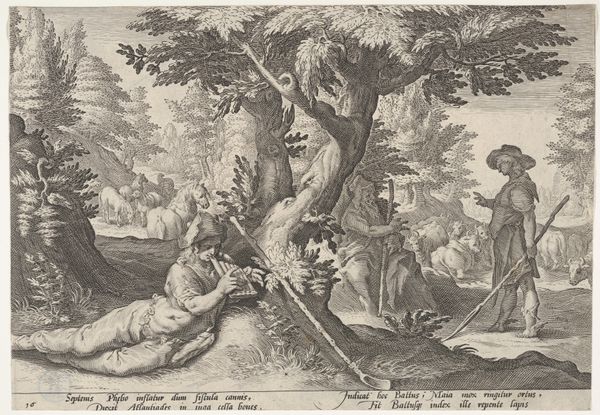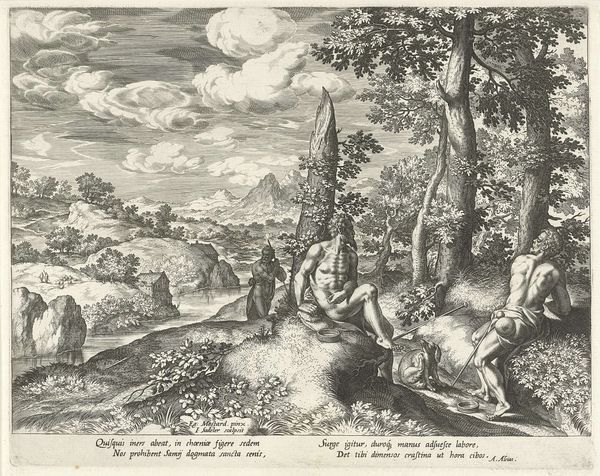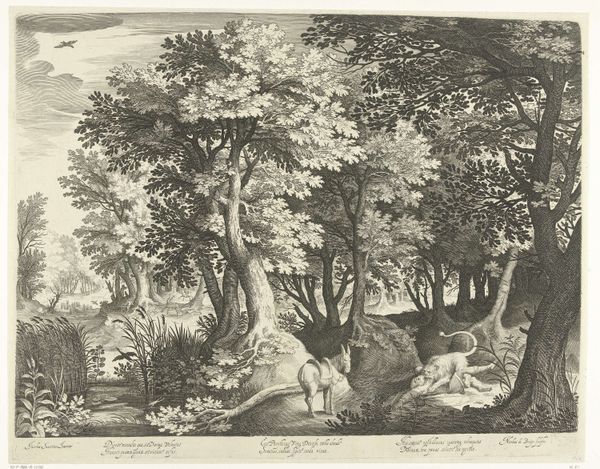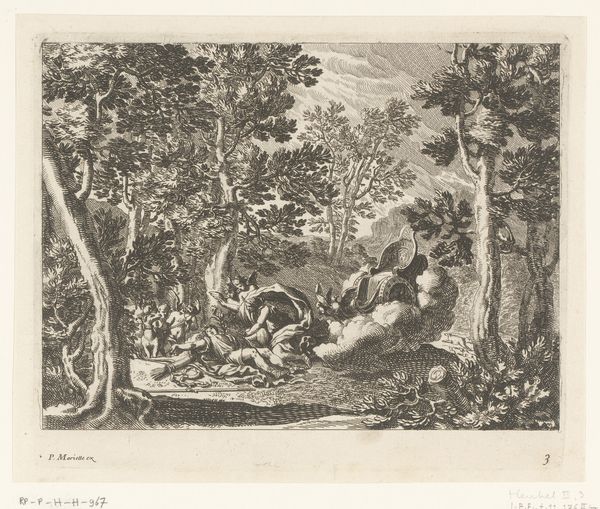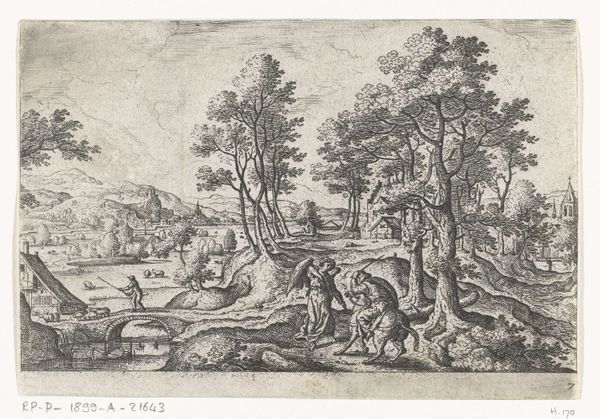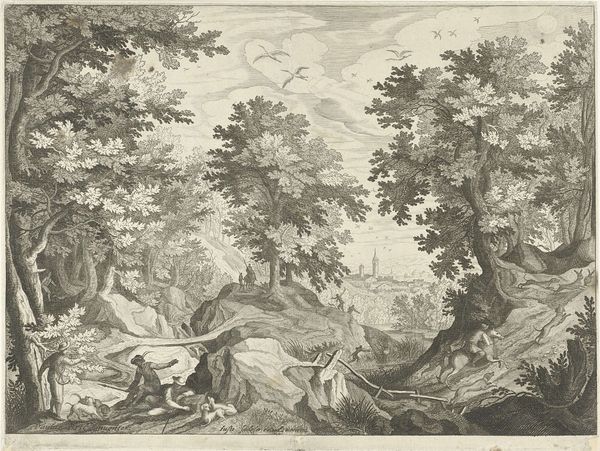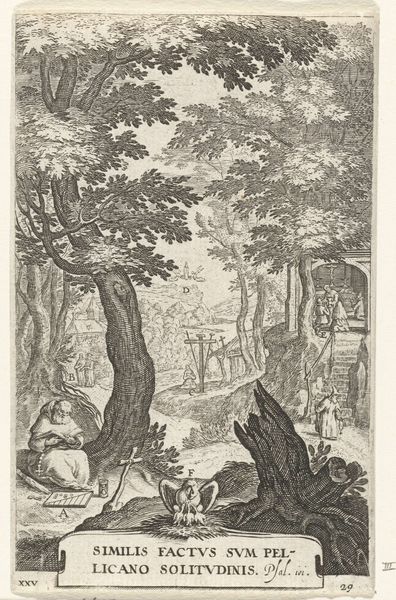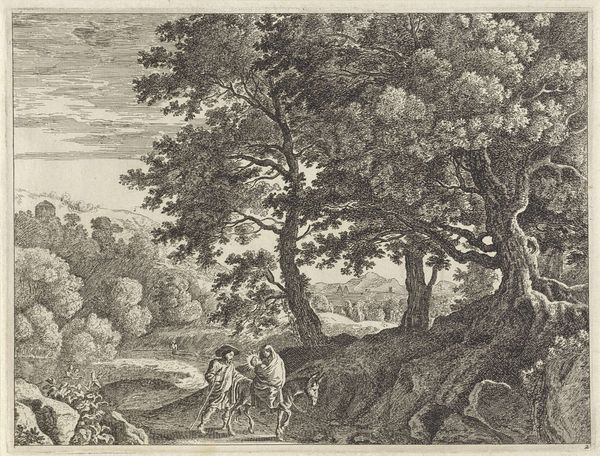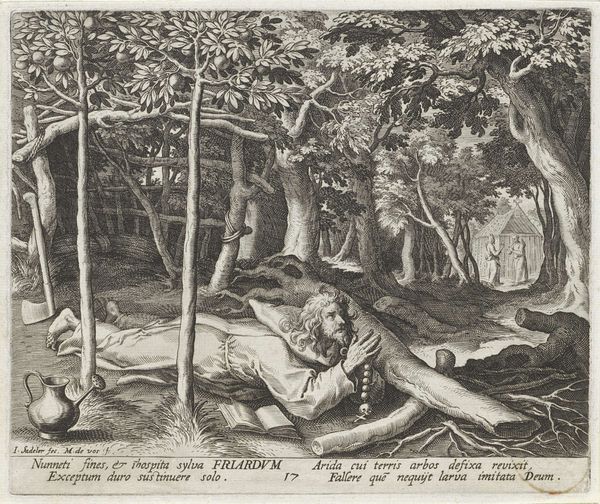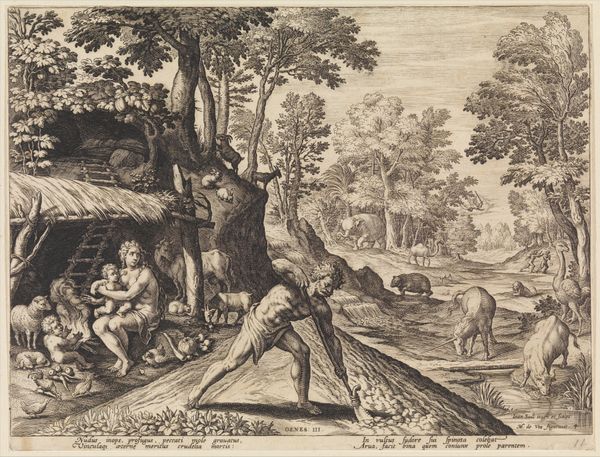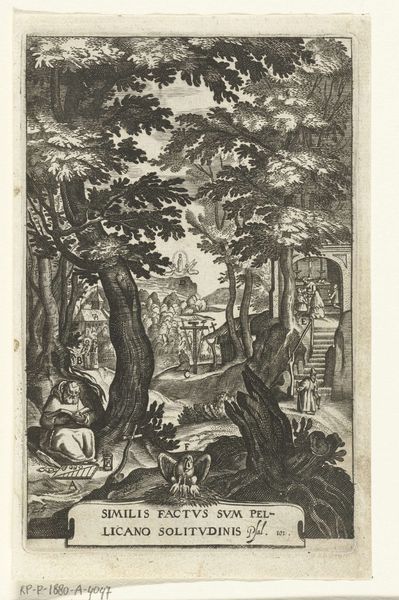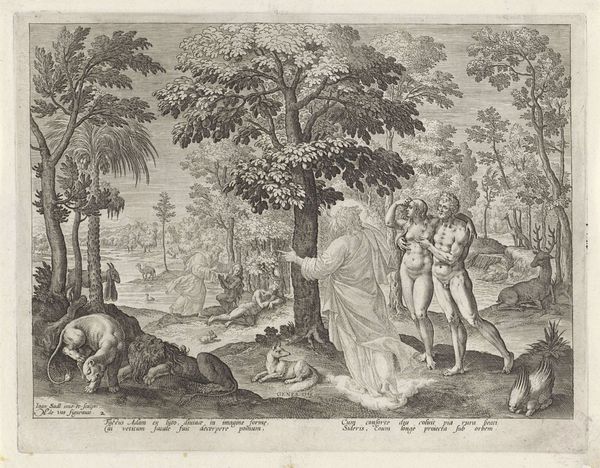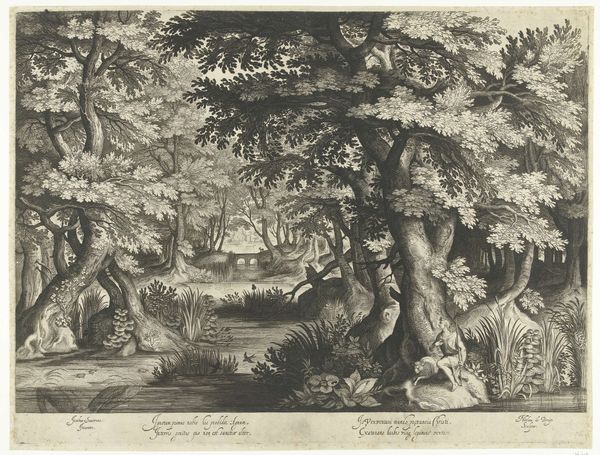
Landschap met Tobias en aartsengel Rafaël die vis schoonmaken 1591 - 1634
0:00
0:00
johanbarra
Rijksmuseum
etching
#
baroque
#
pen drawing
#
etching
#
landscape
Dimensions: height 199 mm, width 262 mm
Copyright: Rijks Museum: Open Domain
Curator: Just look at this tiny, bustling world captured in monochrome! It’s called “Landscape with Tobias and the Archangel Raphael Cleaning a Fish,” an etching dating back somewhere between 1591 and 1634. Editor: It's so detailed, like a miniature stage set. I feel immediately drawn in by the play of light and shadow, almost a sense of the allegorical weight hanging in the trees. It reminds me a little of arguments surrounding environmental justice in Black communities where nature’s exploitation is paralleled by the exploitation of the people. Curator: Yes, I can see that resonance. This landscape is no mere backdrop; it's practically another character! It was made by Joan Barra. You’ll find it here at the Rijksmuseum. What draws me in is the quiet narrative woven into it. Look at Tobias and Raphael at the bottom corner by the river. It tells a small but very deep story. Editor: Indeed. These seemingly calm pastorals can be deceptive. Often they serve to highlight dominant ideologies of land ownership and resource extraction while marginalizing, silencing, or romanticizing other perspectives. One wonders, in the scene’s biblical context, about its contemporary impact during the Baroque period and to whom did this message really speak? Who could own this view, and to what degree? Curator: Ah, that’s an excellent point. And notice how nature here isn't just a passive object, it’s alive, practically writhing with detail. I get this sense that the figures exist in this realm that’s both gorgeous and, dare I say it, slightly threatening! The path leads our eye deeper and deeper into the distance and pulls the scene into focus. The angel, that fish. It seems surreal almost. Editor: Surreal, yet controlled, and highly mediated through specific social and political frameworks. When we engage with landscape art such as this, it's vital we think about what isn't represented – what bodies and experiences have been systemically removed from the pastoral idyll to re-center the viewing position. Who’s labor enables this vision? Curator: I hadn’t quite thought of it that way, but you’re so right. It gives you pause and encourages you to read past the pretty landscape for a story about ownership and exploitation. The whole piece resonates differently. Editor: It really highlights how art engages us to be critically attentive.
Comments
No comments
Be the first to comment and join the conversation on the ultimate creative platform.
